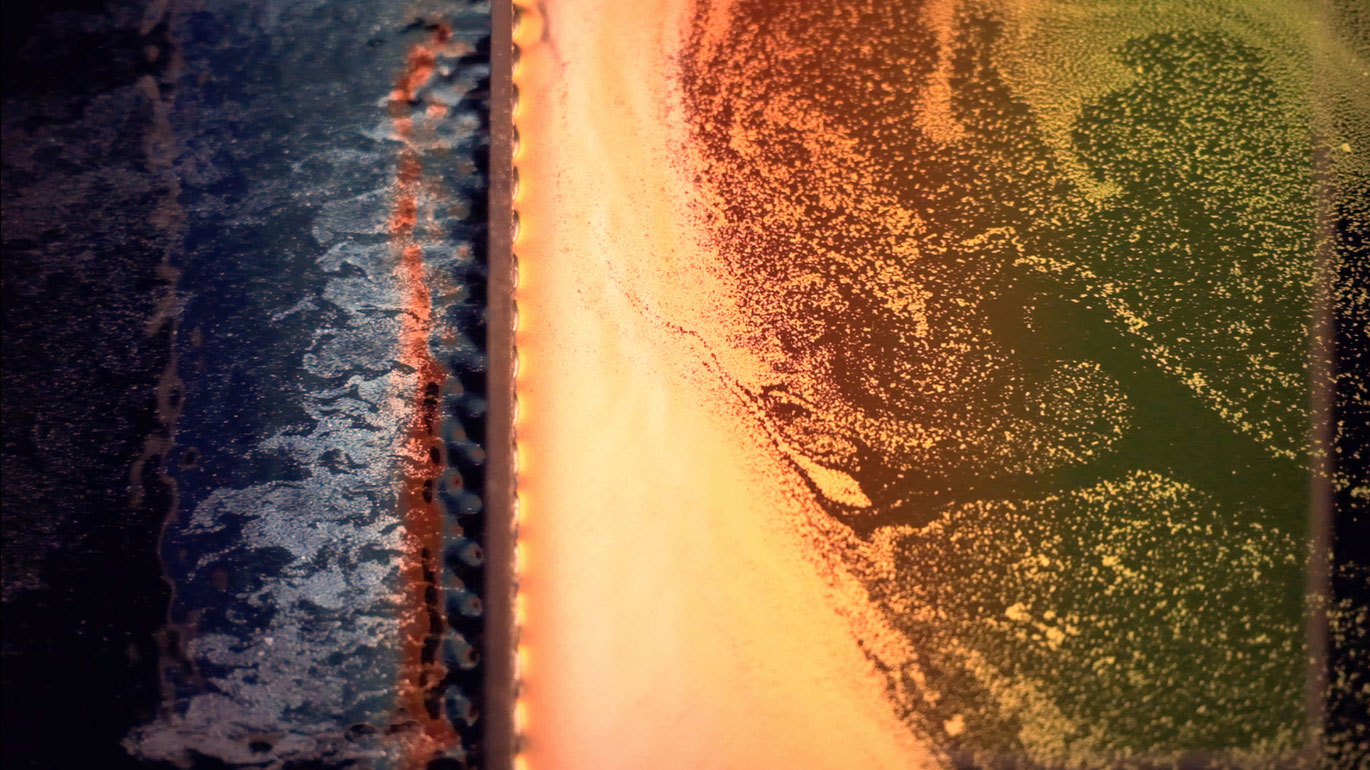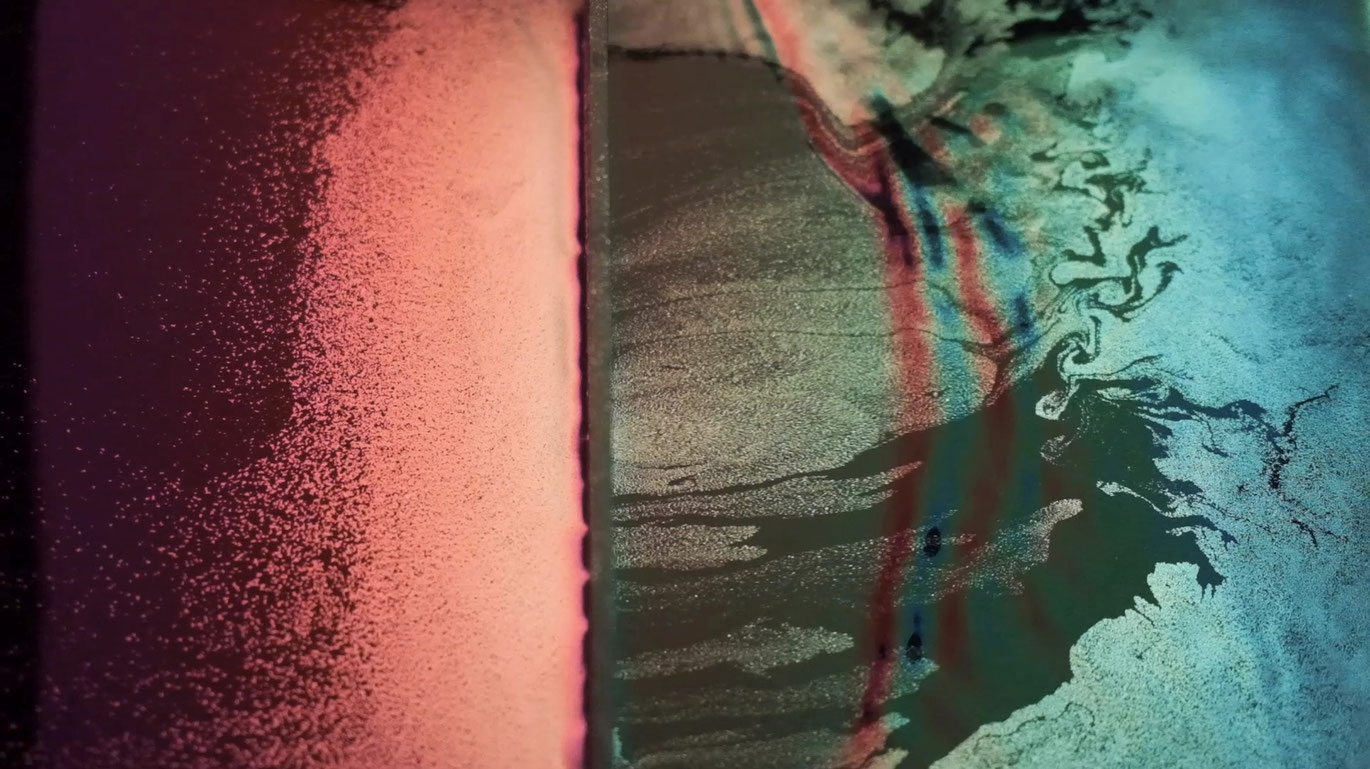Turbulence in a Channel
The video Turbulence in a Channel is inspired by Friedrich Ahlborn's (1858-1937) research on currents, but also by techniques of photographic imaging of water surfaces or lines of force. It is composed of two levels: The currents in the experimental pool and the images reflected onto the surface of the fluid. As a result, there are two heterogeneous rhythms: On the one hand, the streamline shapes and waves created by the fact that the "liquid mirror" is constantly set in motion, and on the other hand, the rhythm of the projected images, which have their own temporality. In this way, a kind of collage of movement, flowing into each other and reflections of various images is created, from which the image filmed in time-lapse mode (5x) is ultimately composed. The "cinematic apparatus" is an experimental basin consisting of a movable frame and a screen. The screen is installed at an angle about 50 cm above the frame. The basin contains a mixture of black ink and silver pigment and serves as a kind of liquid mirror onto which I project various thematically associated images. The liquid moves from left to right or from top to bottom and creates a pendulum effect or a tilting moment in which the liquid produces various currents and surface patterns such as spiral shapes, waves, etc. Small metal obstacles are built into the experimental basin, creating fractures, resistances, symptoms, tensions - in other words, "turbulence in a channel". This channel could be understood as a place for the transmission of images, provoking questions about the interplay of different media and creating new unexpected forms that inevitably provoke associations with painting. (production note)
Turbulenzen im Kanal
2023
Austria
12 min



